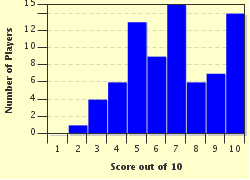Quiz Answer Key and Fun Facts
1. Guadeloupe and Martinique share a common currency. What is this?
2. In 1902 Martinique suffered a catastrophic volcanic eruption when Mont Pelee erupted. Which town, complete with 30,000 inhabitants, did it destroy?
3. Martinique's volcanic nature is due to it being in the area where the North American plate slides underneath which other plate?
4. Guadeloupe is the southernmost of which group of Caribbean islands?
5. In the 1800s mongooses were released on Martinique in an effort to control which indigenous creatures?
6. Early French settlers on Martinique were mainly escaping from religious persecution in their own country. What name is given to these French protestants?
7. Sport is very important in Guadeloupe. Although they represent France many well known footballers and athletes are from the island. Which of the following is a 100 metre sprinter born and raised on the island?
8. Both Martinique and Guadeloupe share something they would both rather do without, which is periodic epidemics of dengue fever. What causes this?
9. Historically the economy of Martinique was reliant on the sugar trade, but this has now drastically declined. What product now uses most of the sugar cane produced on the island?
10. As we noted at the beginning, the Beguine dance originated in Guadeloupe and Martinique. "Beguine" is a word that comes from which language used on both islands?
Source: Author
Christinap
This quiz was reviewed by FunTrivia editor
Snowman before going online.
Any errors found in FunTrivia content are routinely corrected through our feedback system.


